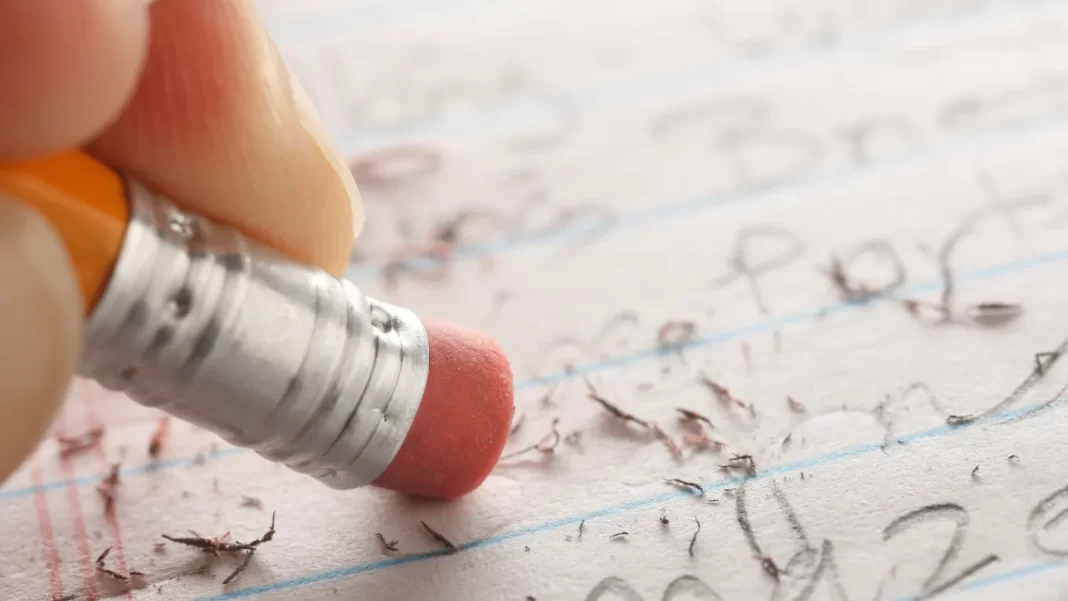I used to believe that great teaching meant having everything under control. My lessons had to be airtight, my grading meticulous, and my students’ success—or failure—felt like a direct reflection of my competence. I stayed up late fine-tuning lesson plans, rewriting feedback, and making sure that every detail was just right. If a lesson didn’t go as planned, if students disengaged, or if my classroom felt chaotic, I took it personally. I believed that if I didn’t have it all together, my students wouldn’t either. What I didn’t realize at the time was that my perfectionism wasn’t helping my students—it was holding them back.
I wanted them to feel confident, take risks, and embrace challenges, but I wasn’t modeling any of that myself. Instead, I was unintentionally teaching them to fear mistakes, to prioritize performance over learning, and to believe that struggle meant failure.
How Perfectionism Hindered Me and My Students
Looking back, I see how my own perfectionist mindset didn’t just shape me—it shaped my students. I remember Maya, a bright student who hesitated before raising her hand.
“I didn’t want to get it wrong,” she admitted.
At the time, I saw it as hesitation. Now, I recognize it as fear—one I had unknowingly reinforced. I designed assignments to eliminate failure, giving students step-by-step instructions, sample essays, and checklists. They followed my directions perfectly, but their voices were missing. Their work was structured, safe—but uninspired.
I thought I was setting them up for success. Instead, I was sending a message: Mistakes aren’t safe here. My need for control was stifling their creativity.
I now understand that if I wanted students to take risks, I had to go first. Learning isn’t about perfection—it’s about discovery, growth, and the courage to try.
3 Ways to Challenge Perfectionist Thinking in Teaching
Letting go of perfectionism wasn’t easy. It wasn’t as simple as saying, “Mistakes are OK!” and suddenly feeling comfortable with them. It took intentional shifts in how I thought about teaching, learning, and success.
If you also struggle with perfectionism in your teaching, here’s what helped me change my mindset—and these might help you too.
1. Shift from performance to process. Perfectionism prioritizes polished results over real learning. But growth happens in the messy, imperfect process.
In your thinking, are you measuring success by how well students follow a rubric or by how deeply they engage? In your classroom, instead of asking yourself, “Did they get it right?” ask “What did they discover?” For yourself, focus on formative feedback and student progress.
2. Model failure and growth in real time. Students are likely to fear failure when they never see adults handle it. If we hide our mistakes, they’ll likely learn to do the same thing.
In your thinking, ask yourself, “Do I model risk-taking or just talk about it?” In your classroom, when you make a mistake, own it. Normalize revision. For yourself, when a lesson flops, don’t overhaul it overnight. Reflect, adjust, and try again.
3. Create space for student ownership. Over-controlling the classroom stifles learning. Students thrive when given responsibility.
In your thinking, consider whether you are guiding or micromanaging. In your classroom, let students revise, set goals, and lead discussions. Learning happens when they take ownership. For yourself, let go of rigid plans. Stay flexible, embrace curiosity, and trust the process.
What You Can Do Right Now
Perfectionism is deeply ingrained, but small shifts create big change. Start building these daily habits to let go of perfectionism and embrace growth:
- Pinpoint where perfectionism shows up—in lesson planning, grading, or handling uncertainty.
- Place an emphasis on measuring growth—engagement and resilience—not just polished outcomes.
- Model mistakes—talk through your own learning process to normalize trial and error.
- Encourage student ownership—instead of stepping in immediately, ask, “What have you tried so far?”
- Let go of rigid control—guide discussions based on student curiosity, even if they veer off plan.
- Reflect daily—ask yourself, “Am I fostering real learning or just getting it right?”
Shifting from perfectionism isn’t about lowering expectations—it’s about redefining success. When I stopped prioritizing perfection and started embracing growth, my students took more risks—and so did I.
I’ve had to let go of lessons where I spent hours crafting masterful multimedia presentations and planning activities down to the minute because a student-led discussion took off. Their insights and questions were so relevant, rich, and engaging that it just made sense to follow their lead. Things didn’t go exactly as I had envisioned, and we veered off track more than once. I even had to scrap my original plans altogether, but what came out of those messy, unplanned moments was deeper than anything I could have scripted.
Students challenged each other’s perspectives, made connections I hadn’t considered, and asked questions that made all of us think. It wasn’t flawless, but it was real. It taught me that real learning doesn’t always fit neatly into a plan—it happens when we make room for exploration, curiosity, and a little bit of chaos and uncertainty.
5 Other Mindset Shifts to Consider
Perfectionism is just one of many mindsets that shape teaching. After over 20 years as a teacher, professor, and coach, I’ve seen patterns in how educators approach challenges.
If perfectionism isn’t your biggest struggle, consider these other mindset changes that may have an impact on your teaching:
- From: “If I fail as a teacher, it means I’m not good enough.”
To: “Every mistake I make helps me grow into a stronger educator.” - From: “I need to get everything right to be a great teacher.”
To: “Teaching is about progress, not perfection.” - From: “It’s my job to make learning easier for students.”
To: “Struggle isn’t a barrier to learning—it’s part of it.” - From: “I should always have the answers for my students.”
To: “The best teachers learn alongside their students.” - From: “A well-run classroom is one where I’m in control.”
To: “A strong classroom is one where students take ownership of their learning.”
The good news? Every mindset we challenge opens the door to deeper learning, stronger student connections, and a more fulfilling teaching experience. Shifting even one of these beliefs can create lasting change—for both you and your students. Choose one shift to try this week, and notice what changes.



